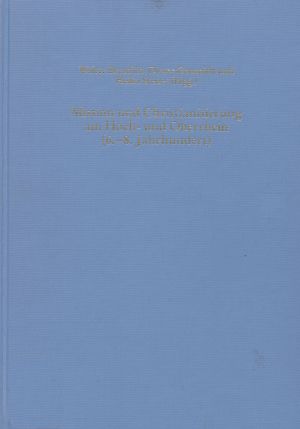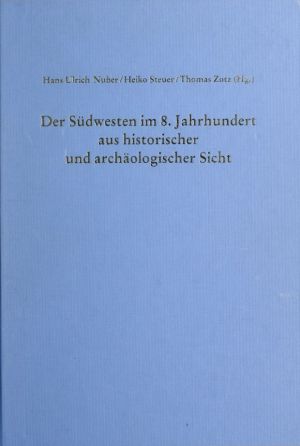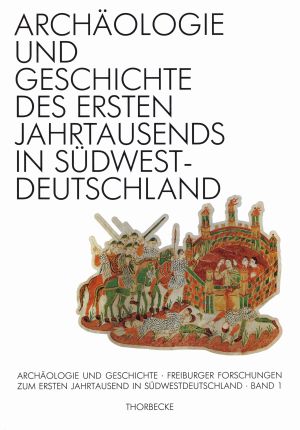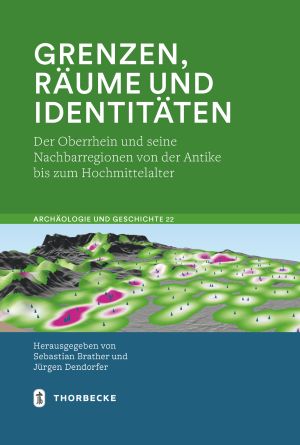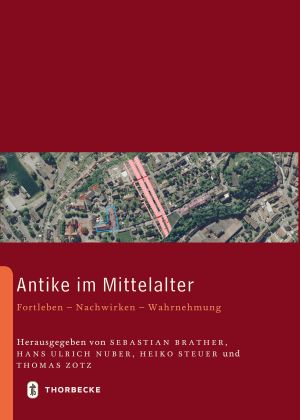Geuenich, Dieter
Mission und Christianisierung am Hoch- und Oberrhein (6. - 8. Jahrhundert)
The Christianization of the Germanic peoples of Western Europe began with the conversion of Clovis, king of the Franks, who, according to the report of the historian Gregory of Tours, vowed his conversion to the Christian Catholic faith in a battle against the Alemanni in 496/97. This event of "world historical significance" was recalled and honored in 1996/97, 1500 years after the legendary Battle of the Alemanni, in numerous events, exhibitions and publications. In March 1997, historians, theologians and archaeologists met in Bad Säckingen at the invitation of the city for a scientific colloquium to examine the missionary work and Christianization of the Alemanni, which probably began only decades after Clovis' baptism. The concentration on the area between the High and Upper Rhine and the interdisciplinary dialogue led to new insights and results, which are presented in this volume.
Der Südwesten im 8. Jahrhundert aus historischer und archäologischer Sicht
On October 28 and 29, 1994, the Freiburg Research Network "Archaeology and History of the First Millennium in Southwest Germany" organized a colloquium at the University of Freiburg with the topic "The Southwest in the 8th Century from a Historical and Archaeological Perspective".
During the colloquium in 1994 such a period of upheaval was to be looked at more closely with the 8th century. This period, which cannot be strictly defined as a century, shows its transitional character in various respects, e.g. in political history with the striking end of the Alemannic duchy in the middle of the century and the integration of Alemannia into the Frankish Empire, in settlement archaeology with the flowing end of the row grave custom, the typical burial custom in the Merovingian Empire, and thus of the so-called row grave civilization. It was the intention of the colloquium to work out selective and long-term changes of this kind in the concentration on a region characterized by manifold historical traditions (Celts, Romans, Alemanni) as well as in the specific comparison with other historical landscapes and to approach the topic both in a general overview and in individual case studies.
Archäologie und Geschichte des ersten Jahrtausends in Südwestdeutschland
The research association "Archäologie und Geschichte des ersten Jahrtausends in Südwestdeutschland", founded in 1984, has set itself the goal of exploring the early history of the German southwest in an interdisciplinary conversation. The first volume of the series of the same name contains 15 contributions by renowned historians who present the latest results of research from their fields of activity - provincial Roman and early historical archaeology and medieval regional history. The geographical focus of the investigations is the area between the upper Rhine and the upper Danube, between the Swiss Jura and the Swabian Alb, the Burgundian Gate and the Franconian Ries. The time span ranges from the Celtic period and the Roman occupation of the country to the era of the formation of high medieval noble houses and sovereign territories. The research association pays special attention to periods of upheaval in history, the change of populations and the transformation of social and economic structures as well as the introduction of technical innovations. The book, which is equipped with an extensive index and many illustrations, provides a clear introduction to the methodology and working methods of ancient history. It is therefore an indispensable compendium for students and scholars, but also for the layman interested in regional studies.
Grenzen, Räume und Identitäten: Der Oberrhein und seine Nachbarregionen von der Antike bis zum Hochmittelalter
A new, preferably unbiased view of spatial structures proves to be a decisive prerequisite for freeing research from rigid assumptions and models. This makes it possible to replace previous and necessarily highly simplified dominant narrative with complex reconstructions. Beyond large lines, spatial relationships and structures prove to be flexible and changeable. The contributions collected in this volume underline how different approaches and perspectives can be, even when they deal with the seemingly self-evident "space". In this opening beyond deterministic concepts and conceptions of space, which geography has long since completed, there are new opportunities for archaeological and historical studies.
Antike im Mittelalter. Fortleben, Nachwirken, Wahrnehmung: 25 Jahre Forschungsverbund »Archäologie und Geschichte des ersten Jahrtausends in Südwestdeutschland«
A new, preferably unbiased view of spatial structures proves to be a decisive prerequisite for freeing research from rigid assumptions and models. This makes it possible to replace previous and necessarily highly simplified ladder counts with complex reconstructions. Beyond large lines, spatial relationships and structures prove to be flexible and changeable. The contributions collected in this volume underline how different approaches and perspectives can be, even if they deal with the seemingly self-evident "space". In this opening beyond deterministic concepts and conceptions of space, which geography has long since completed, there are new opportunities for archaeological and historical studies.



